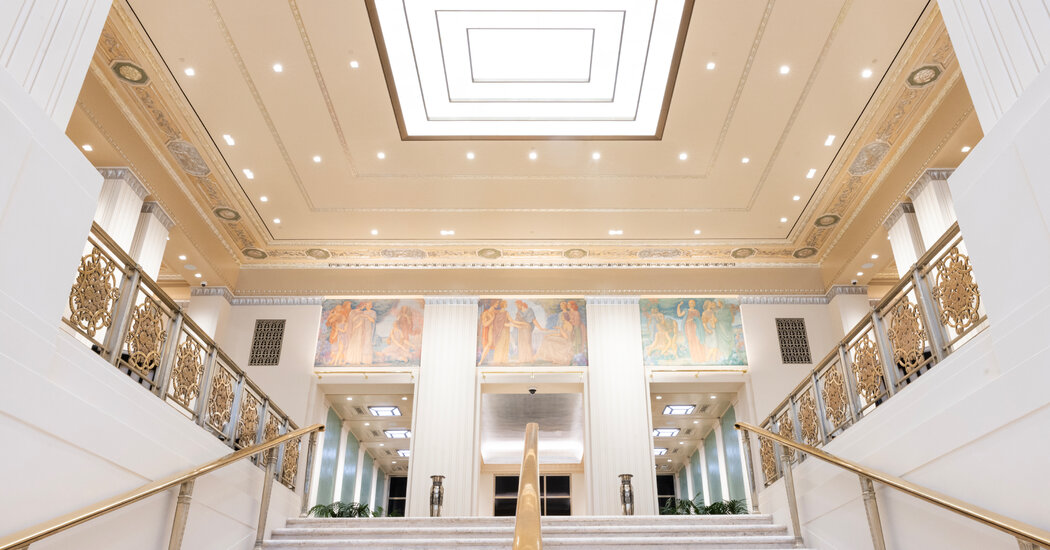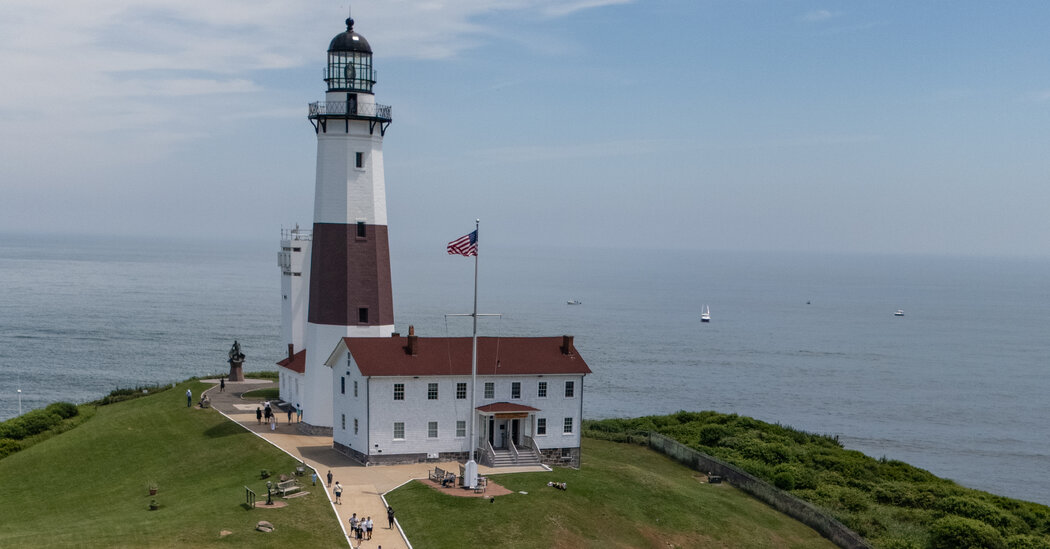New York is a city filled with grand hotels, including the Plaza, the St. Regis and the Carlyle. But for nearly a decade, perhaps its most famous hotel, the Waldorf Astoria, home of Peacock Alley and a namesake salad of fruit and nuts, has been shuttered, its Art Deco facade obscured behind green plywood scaffolding.
Now, following an ownership change, a pandemic and a painstaking renovation, the hotel is about to open its doors to guests.
“The Waldorf has always been a reflection of New York,” said David Freeland, a historian and the author of “American Hotel: The Waldorf-Astoria and the Making of a Century.” “I’d like to think that its reopening symbolizes the return of a great public space within the life of the city.”
First constructed as two hotels, the Waldorf and the Astoria, on adjoining lots just below 34th Street on Fifth Avenue, the hotel closed in 1929 to make way for the Empire State Building. A few months later — and just days before that year’s Wall Street crash — the owners struck a deal to move to its current location, a full block between 49th Street and 50th Street, from Park Avenue to Lexington Avenue.
In 1931, the Waldorf-Astoria (the hotel dropped the hyphen in 2009) reopened as a 47-story limestone skyscraper with twin decorative copper spires and nearly 2,000 rooms, each outfitted with a speaker on which guests could listen to goings-on in the hotel’s Grand Ballroom, where Frank Sinatra sang, Albert Einstein spoke and the gossip columnist Elsa Maxwell held elaborate parties. At one, the April in Paris Ball, door prizes included a full-length mink coat and a diamond necklace, and Ms. Maxwell made her entrance on the back of an elephant.
The hotelier Conrad Hilton long aspired to own the Waldorf-Astoria, calling it “the greatest of them all,” and in 1972, his company acquired the property.
In 2014, Hilton sold it to the Chinese firm Anbang Insurance Group for $1.95 billion, at the time the most expensive hotel sale in history. Hilton retained a 100-year contract to continue managing it.
In 2017, Anbang closed the aging hotel to refurbish it and convert the upper floors into condominiums. In 2020, however, after being accused by the Chinese government of economic crimes, Anbang declared bankruptcy and the property was transferred to Dajia Insurance Group, also a Chinese firm, and the parent company of Chicago-based Strategic Hotels & Resorts, a luxury hotel group.
Just 62,000 square feet of the 1.6-million-square-foot building is officially landmarked by New York City and much of the rest of the building has been reimagined in what Andre Zotoff, the chief executive of Strategic Hotels & Resorts, characterizes as a multibillion-dollar investment.
Inside, New Yorkers and visitors will find many of the Waldorf’s most notable mainstays gleaming and refreshed. Other details are new but reflect the intentions of the original architects, Schultze & Weaver, who could not execute them, stymied by cost or technical limitations. Here, a tour of the highlights.
“By the time the hotel closed, the main lobby was very dark and very busy,” said Mr. Mahan. “Now, we have re-established the symmetry of the openings on all four sides; at the north there is a bar that is recessed, and at the south we have removed the reception desks and placed them into a new space, a more intimately scaled reception area called the Library Lounge.”
In the Library Lounge, hotel employees welcoming guests will be wearing new uniforms by the British designer Nicholas Oakwell, with silver silk blazers and waistcoats for the women and Prince of Wales check three-piece suits for the men. Guests can now enter from a porte cochere on 49th Street, enabling them to bypass Park Avenue traffic and head directly to the door where employees can collect their luggage and valet park their cars. Guests can then proceed directly to the Library Lounge via a staircase.
The hotel’s new managing director, Luigi Romaniello, joins a long line of Waldorf managers, most famously Lucius Boomer, who ran the Park Avenue hotel from its inception until his death in 1947, and Oscar Tschirky, better known as Oscar of the Waldorf, who is credited with popularizing the Waldorf salad, Thousand Island dressing and eggs Benedict.
“When I was contacted by the Waldorf, the job was everything I ever wanted,” said Mr. Romaniello, who joined more than a year ago from the Plaza. “A hotel that is bigger than life that means so much to so many people.”
When the hotel closed in 2017, it had more than 1,400 rooms. There are now just 375, with 372 privately owned condominiums on the floors above. The interiors, designed by Pierre-Yves Rochon, have an average ceiling height of eight or nine feet, with most exceeding 570 square feet; the smallest room measures twice the size of the original hotel rooms. Room rates start at $1,500 a night.
The rooms feature separate dressing areas and most also have bar areas, and all the building’s windows, some 5,600 of them, are new, many framed with side mirrors that create an illusion of greater space and light. “The hotel used to have 3,000 guests when it was fully occupied,” said Mr. Romaniello. “But now that there are fewer rooms, we can offer a much more elegant, elevated experience.”








